|
|
|
|
|
Garden Notes

|
|
|
|
|
Greetings from Christianson's! |
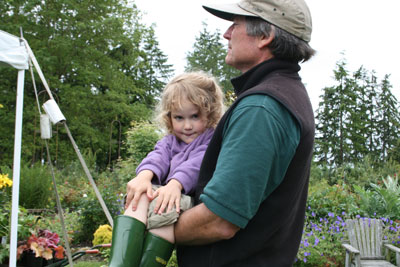 | |
John Christianson and granddaughter, Maeve, at the Rose Festival
|
Can it really be July? It's hard to believe, especially when I'm still wearing fleece and my flip-flops are covered in dust bunnies. But we are hardy souls here in Skagit Valley.
Take our Rose Festival, for example. It was held on Saturday, June 18, and we woke up that morning to the sound of rain. It was not just a gray day, it was a wet day. However, the show went on with great hoopla. We lit the stove in the schoolhouse and it was soon filled with 75 beautiful rose display entries. What a gift from nature to see and smell so many lovely roses on a day like that!
In the afternoon the rain let up and we were treated to three wonderful speakers - Robyn Swesey and Larry Sawyer from the Tri-Valley Rose Society and of course, Ciscoe Morris. After Ciscoe's talk, the day had warmed up enough that the 'Rose Ice Cream Social' felt like the perfect finale.
The theme of this newsletter was inspired by that day. With or without the rain, the hoopla continues as we work and play in our gardens. There's lots going on at the nursery this month, including three gardening classes, a Q&A nursery walk, and three sales events. We hope to see you there and remember, you are always welcome to bring a picnic lunch and enjoy it in our Schoolhouse Gardens. Ahhh...now that's starting to sound like summer!
|
|
Simple Guidelines for Growing Herbs
By Ani Gurnee
|
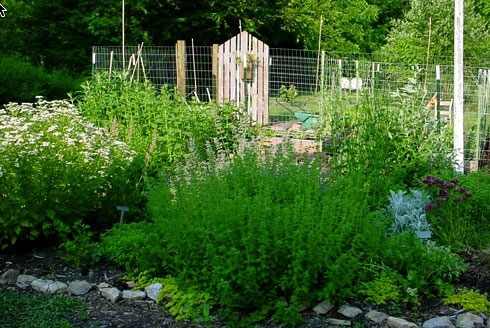 | |
What is Paradise but a garden, an orchard of trees and herbs, full of pleasure and nothing there but delights.
~ William Lawson, 1618
|
Herbs are a wonderful part of gardening that can be integrated into ornamental or vegetable plantings, or put into a special garden all by themselves. There are herbs of many diverse natures, but amongst the more common ones there are several things worth considering.
Many herbs are highly aromatic and the aroma is borne in the oils of the plant. These oils are concentrated in the leaves with sunlight and heat. So, although most may survive in shade, they will not develop the intensity of smell and flavor that they will when planted in the sun. Many of these - lavender, sage, thyme, oregano, for example - come from dry, hot, rocky hillsides of southern Europe, the Mediterranean zone. Think of sun-struck Provence and arid Italy when you carry that new pot of rosemary or basil around as you look for a spot to plant it. Consider too that our soils here are acidic whereas Mediterranean soils are limey and more alkaline. The pH of the soil determines nutrient availability for the plant so it is very important to pay attention to this, not just for herbs but for a wide range of plants. Most herbs from rocky arid soils do not need much nitrogen. More succulent herby edibles like basil and parsley, on the other hand, benefit by a generous addition of nitrogen.
Some herbs are woody (i.e. rosemary and lavender) and benefit by being trimmed back 50% right after flowering. This retains the plant's form as a lush dense mound and prevents it from getting open, woody, and straggly with age. Others are rampant re-seeders (i.e. fennel and cicely) which can get huge, so scratch out those seedlings when they are tiny!
Some are aggressive spreaders by root, mint being a prime culprit. Oregano too. Keep mint in a pot by itself so it doesn't take over the whole garden!
These are common issues and considerations that come up frequently in my work with gardening clients over the years. Growing herbs is a relatively easy and rewarding endeavor so have fun and enjoy!
Speaking of fun, the nursery is offering an culinary herb class on July 16 and summer herbs will be on sale July 18 -31. Here are the details:
"Using and Preserving Herbs with Suzanne Butler"
11 am - 12:30 pm Saturday, July 16
reservations required ($5 class fee)
Class participants will receive
20% off on herb purchases that day
Summer Herb Sale ~ 20% off
July 18 - 31
Additional Herb-Related Resources:
www.herbsociety.org
www.culinaryherbguide.com
www.herbgardening.com
www.theherbgardener.blogspot.com
|
|
 |
|
Summer Specials
| |
July 1 - 5
Annuals - 40% off
July 6 - 17
Hydrangeas ~ 20% off
July 18 - 31
Summer Herbs - 20% off
August 1 -21
Outdoor Containers - 20% off
August 22 -31
Summer Heather - 20% off
August 22 -31
Water Plants - 30% off
|
| Where to find us | |

15806 Best Road
Mount Vernon, WA 98273
360-466-3821
1-800-585-8200
Open daily 9 am - 6 pm
NW Flower & Garden Show "People's Choice Award 2011"
|
|
Tidbits and Ideas
|
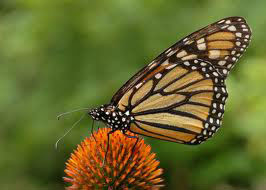 Plants That Attract Hummingbirds & Butterflies (to name just a few) Agastache Aster Buddleia Cape Fuchsia Echinacea Hardy Fuchsia Joe Pye Weed Kinnikinnick Liatris Monarda Penstemon Salvias Scarlet runner beans Yarrow - Achillea Check out these sites for more ideas and plant lists: www.monrovia.com www.thebutterflysite.com www.hummingbirds.net |
|
|
|
The Garden in July...with Ani Gurnee
|
Ah, all you revelers in the good earth! Having waited endless months for this luscious light and warmth, suddenly solstice is come and gone, the spring flown like an explosion of Goldfinches from the dandelion heads. Having been first frustrated - but then perhaps spoiled - by this spring's excessive moisture (have you noticed some growth more rampant than usual?), we now hazard sudden or prolonged dry spells heading into the height of summer. Pay attention! Part the clods and the mulch and reach down 3 - 5 inches to actually feel, with your fingers, the moisture level in the soil. Do not wait for wilting before giving those roots a little drink. All those new plants especially need extra moisture and nutrition (nitrogen!) to push roots beyond the ultra-porous and easily dehydrated potting soil they were started in. Have you ever pulled a sickly or dead plant out of the ground after a year and found its roots still in the shape of the pot you bought it in? That is almost always the consequence of lack of water in those early weeks after transplanting into the garden. Picture that pot-shape in the ground like a stovepipe of acute evaporation. When watering new plants, get your hose-end going with a gentle but saturating flow (no nozzle needed) and place it right down at the base of the stem of each individual new plant and drench it thoroughly. Then move the hose out from the plant's center and generously soak the surrounding soil as well so that those tiny fragile roots find that surrounding denser soil equally as friendly and migrate into it readily. It is easy to be tricked into believing a general sprinkling of the top of the soil is adequate, when 2" down it can actually still be bone dry. Watering plants individually by hand is the most reliable method for new plants. Yes, we're all so busy but it is actually fun and informative to lift one or two perennials about a month or two after planting and visually observe the process of roots migrating outward from the pot-shape they were bought in. When you learn to move through your garden conscious of what your plants look like above and below the ground, the sense of your garden being an alive and on-going process will be greatly enhanced.
Here are a few more tips for July:
- When your rambunctious hardy geraniums and catmints start looking spent and straggly, gather the stems up in your hand and whack it all at about 6" from the ground. They will throw out a whole new mound of foliage and bloom a second time. Same with all those sprawling, post-bloom oriental poppies, which can almost go dormant now for a spell, but will green up over summer and remain green all winter, preparing for next spring.
- Snap off all rose blooms as soon as they fade and you will be well rewarded with an extended bloom cycle. Modern shrub roses like Golden Celebration never did stop blooming for me all last summer.
- In the vegetable garden, mulch more and rototill less. Excessive summer rototilling dries and depletes the soil and disrupts all the intricate microbial relationships you have worked so hard to promote.
- Keep veggies like beans, peas, and summer squash picked even if you can't eat it all. If veggies are allowed to mature on the plant, the plant will stop making more.
- Thin apples before they are walnut-sized. One apple per cluster and about 6 - 8" apart.
- All fruit trees less than five years old should have a weed and grass-free zone of 3 feet diameter around the trunk. Those young roots are shallow and will be in direct (and losing) competition with grass roots until they find their way deeper over the years.
- Now that roses are in full bloom, cruise the rose selection at the nursery and take notes on your favorites, even if you can't afford to buy them all. Always good to be well informed ahead of those little windows of opportunity that come along!
Enjoy every day. Good gardening is made up of those ten million minute observations made every day in your very own yard! 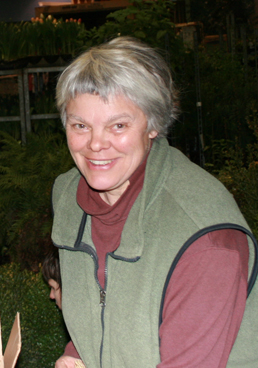
Ani Gurnee is a popular and greatly-adored guest speaker at the nursery. Ani is the owner of Aulos Design and she can be reached at 360-445-2028. |
|
Remember to Play
|
A few years ago I bought a silver ring engraved with the words 'remember to play'. It's a simple concept yet surprisingly hard to do. We are a 'To Do List' culture, always trying to catch up, keep up, stay ahead, multi-task, be prepared, do what's right, manage time, and stay on task. I remember looking at my ring on occasion and saying to myself, "Oh yes, I must remember to play. I will do that tomorrow. Add it to the list."
What does this have to do with gardening? Everything! All year we have done our good deeds in our gardens. We have pruned, tilled, planted, divided, weeded, mulched, fertilized, mowed, and watered. But it's July - the heart of the summer - and it's time to take a break (gasp!) and enjoy what we have created. Quite simply, it's time to play!
Here are just a few ideas....
- Take some of your more enjoyable and relaxing tasks outside to your garden. You can write, read, call a friend, stretch, or just enjoy a few quiet moments to yourself.
- Put a birdbath in your garden. If the birds don't use it, put a rubber duck in it.
- Spend some outdoor time with your pets. Play with them, brush them, or just hang out together and do nothing.
- Dine 'al fresco'. Even if you don't cook outside, you can eat outside. Set a fun table including fresh cut flowers from your garden. And don't be afraid to use your indoor dishes and glasses. You can use your outdoor dining room for morning coffee, brunch, cocktail hour, and dinner.
- Bring back game night. Play Scrabble or Bridge in the garden.
- Make or buy a fire pit and make S'mores. You just need sticks, marshmallows, chocolate bars, and graham crackers. Or keep it simple and just enjoy the fire while you take in the beauty of your garden in the evening light.
- Put up bird feeders and get a bird book.
- If you've planted flowers that attract hummingbirds and butterflies, take pictures. To learn more about hummingbird and butterfly gardening, check out the box above called 'Tidbits & Ideas' (it's in the left-hand column).
- The best way to feel like a kid is to hang out with a kid. Spend some outdoor time with the kids in your life. There are so many simple, inexpensive ways to have fun with children in a summer garden. Treasure hunts, sprinklers, games, tents and flashlights, cookouts, art and science activities...the list goes on and on!
- Put up a hammock.
- If you have a lawn, go barefoot.
- Pitch a tent and camp in your own backyard.
- Play lawn games, like Bocce Ball and Croquet.
- Watch movies or sporting events outside. You can set up a projector and use a screen (or a large white sheet) or set up a large screen TV and DVD player in your backyard.
- If it's raining, you can still open a window and sit in a cozy chair nearby where you can see your garden, watch the birds, and luxuriate in the fresh, rejuvenating air.
Here are more ideas:
www.homeandgardenideas.com
Backyard Fun
How to Plan a Garden Party
Types of Lawn Games
The possibilities are endless, especially when you start combining ideas. For example, relax in a hammock while you watch the birds. Kick off your shoes and play in the sprinkler with your kids. Enjoy the action at the birdbath while sipping your morning coffee.
This business of play takes dedication and requires action. These summer months are fleeting so seize every opportunity to get outside and play!
How do YOU 'play' in your garden? If you have ideas, we'd love to hear from you.
Please send us your ideas and we will share them in next month's issue of Garden Notes.
Simply click here to send us an email. Thank you!
This article was written by Eve Boe, Garden Notes Editor,
and Contributing Writer, Debbie Galbraith
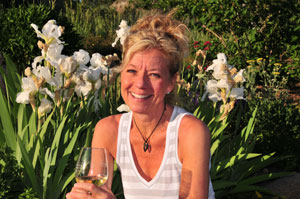
Debbie is a freelance writer who splits her time between La Conner and Steamboat Springs, CO. When she's not tending to her irises, Debbie and her husband are developing a blog, Entertaining Couple, where they will share recipes and inspirations with those who love to entertain friends and family as much as they do.
|
|
Upcoming Classes
|
Hypertufa Saturday, July 9 and August 27 10 am to 12:30 pm reservations required class fee: $35 Local landscape designer and garden artist, Kathy Hirdler of Floribunda Designs, returns to Christianson's to share her knowledge of making hypertufa containers and ornamentation for your garden. Make a traditional hypertufa trough to take home for planting with alpines or sedums, while learning all about hypertufa and other cement-based materials. Planters, water basins, stepping stones, leaves and sculptural pieces can all be made using the techniques Kathy will be presenting. All materials and supplies are provided but students should wear gardening/work clothes or a sturdy apron, and bring a trowel. Using and Preserving Herbs with Suzanne Butler Saturday, July 16 11 am to noon reservations required class fee: $5 Awaken your senses as you look at, smell, and taste a variety of fresh seasonal herbs. Suzanne Butler, Graham Kerr's Cooking Assistant since 1993, former Manager of the Mount Vernon Farmer's Market, and a Chef Instructor, will lead you through this engaging and interactive session as she reviews the variety of ways to preserve herbs for the winter and demonstrates how to use both fresh and dried herbs in recipes. Nursery Walk with Ani Gurnee Saturday, July 16 1 pm - 2 pm complimentary but reservations required class limit: 20 Ani Gurnee from Aulos Design will lead you on a tour of our greenhouses, gardens and nursery grounds, answering any questions you may have about the selection and care of perennials, annuals, grasses, trees, shrubs, and any other plant you are interested in learning more about. Ani will provide design tips, offer new insights, and spark your imagination during this informative and interactive walking tour through the nursery. It's Blueberry Time Saturday, July 30 11 am to noon reservations required class fee: $5 Matt Groff, a longtime blueberry farmer and Christianson's staff member, will share his years of experience raising blueberries in Skagit Valley. Matt will review which varieties are best suited for this region and answer all your questions about how to grow great blueberries. Growing Winter Vegetables with Bill Thorness Saturday, August 6 11 am to noon reservations required class fee: $5 Want to serve your own salad on Thanksgiving, Swiss chard at the winter solstice, collards for Christmas, and purple sprouting broccoli for Valentine's Day? You can do it if you start your fall and winter garden now. This class will talk about winter gardening techniques, succession planting, soil building and the right timing to grow food throughout the year. Instructor Bill Thorness, author of 'Edible Heirlooms: Heritage Vegetables for the Maritime Garden', has been growing food in his Seattle garden for more than two decades. www.edibleheirlooms.com 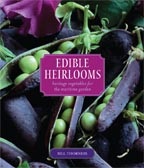 Hypertufa Saturday, August 27 10 am to 12:30 pm reservations required class fee: $35 Local landscape designer and garden artist, Kathy Hirdler of Floribunda Designs, returns to Christianson's to share her knowledge of making hypertufa containers and ornamentation for your garden. Make a traditional hypertufa trough to take home for planting with alpines or sedums, while learning all about hypertufa and other cement-based materials. Planters, water basins, stepping stones, leaves and sculptural pieces can all be made using the techniques Kathy will be presenting. All materials and supplies are provided but students should wear gardening/work clothes or a sturdy apron, and bring a trowel. Note: This popular class will be a second offering of the same class scheduled on July 9. For class reservations, call us at 360-466-3821 or 1-800-585-8200
|
|
Closing thought...
| |
"If the day and the night are such that you greet them with joy, and life emits a fragrance like flowers and sweet-scented herbs, it is more elastic, more starry, more immortal - that is your success. All nature is your congratulation, and you have cause momentarily to bless yourself."
~ Henry David Thoreau

|
|
|
|
Garden Notes Editor:
Eve Boe, Public Relations and Events Coordinator
Christianson's Nursery & Greenhouse
eve.christiansons@gmail.com
360-466-3821
|
|
|
|
|
|